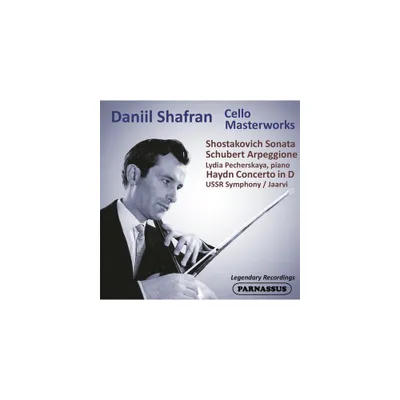Home
Mozart, Haydn, Schubert
Loading Inventory...
Barnes and Noble
Mozart, Haydn, Schubert
Current price: $23.99


Barnes and Noble
Mozart, Haydn, Schubert
Current price: $23.99
Loading Inventory...
Size: OS
*Product Information may vary - to confirm product availability, pricing, and additional information please contact Barnes and Noble
Original music for guitar was sparse during the Classical period, which is odd considering that, as the performers themselves point out here, a good deal of music was arranged for the affordable and easy-to-transport instrument. Furthermore, the textures of Classical-era music, with their arpeggiations and elegant runs, fit the guitar beautifully, and it wasn't hard for arranger and guitarist
Edin Karamazov
, backed by
Pavel Steidl
on the second guitar, to find music that, as they put it, "could be performed by two guitars without significant intervention."
Schubert
's
Arpeggione Sonata, D. 821
, a work that essentially exists only in transcription anyhow, works beautifully here, resting comfortably in the guitars' range and revealing its considerable melodic charms in this version. The
Haydn
Piano Sonata in E flat major, Hob. 16/49
, a work of modest technical demands on the piano, also works smoothly in this version. The list of attractions continues with the oddly amusing drawing of the two artists in the graphics. Less successful is the
Mozart
Fantasia in C minor, K. 475
, an arch-pianistic work that sounds bare here; a vocal adaptation might have changed things up a bit. The studio sound is too claustrophobic, especially considering that, as the performers themselves point out, part of the function of guitar arrangements was to allow the music to be played outdoors. On balance, though, this performance offers precisely the same kind of entertainment value that it would have had during the era when this music originated. ~ James Manheim
Edin Karamazov
, backed by
Pavel Steidl
on the second guitar, to find music that, as they put it, "could be performed by two guitars without significant intervention."
Schubert
's
Arpeggione Sonata, D. 821
, a work that essentially exists only in transcription anyhow, works beautifully here, resting comfortably in the guitars' range and revealing its considerable melodic charms in this version. The
Haydn
Piano Sonata in E flat major, Hob. 16/49
, a work of modest technical demands on the piano, also works smoothly in this version. The list of attractions continues with the oddly amusing drawing of the two artists in the graphics. Less successful is the
Mozart
Fantasia in C minor, K. 475
, an arch-pianistic work that sounds bare here; a vocal adaptation might have changed things up a bit. The studio sound is too claustrophobic, especially considering that, as the performers themselves point out, part of the function of guitar arrangements was to allow the music to be played outdoors. On balance, though, this performance offers precisely the same kind of entertainment value that it would have had during the era when this music originated. ~ James Manheim


















